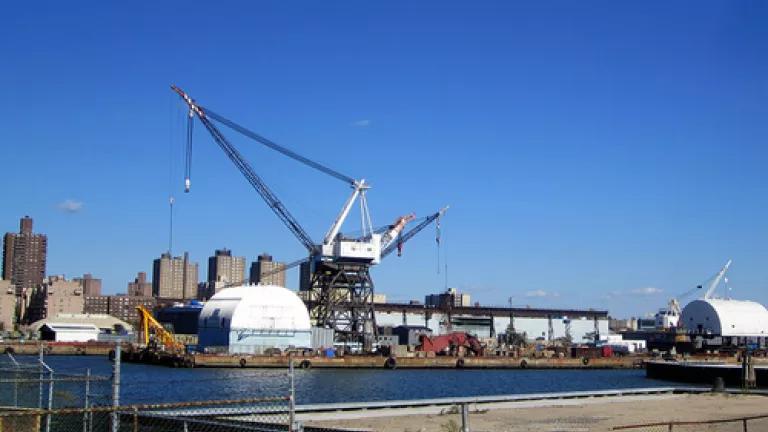
On a trip to New York City last week I rode some of the newest and oldest train lines in the country – the Acela, America’s only high-speed train, from DC to New York, and then the A train from Penn Station out to Brooklyn. As I sweated it out on the subway platform on a hot September day, I remembered that this train, unlike the DC Metro that I ride every day, has been around since the 19th century.
I’d been invited by the Blue-Green Alliance to speak at a conference about transit investment and the manufacturing industry, which was held in the Brooklyn Navy Yard. This former shipbuilding site, now a modern industrial park, was the perfect setting to talk about how important the manufacturing industry is in New York, and the impact that transit development could have here.
Image courtesy wallyg via Flickr
This gathering illustrated, once again, how the issue of transportation reaches across traditional political and ideological boundaries. Representatives from the environmental movement, academia, labor, business and community groups had all come together to form a coalition in support of creating jobs through mass transit investment. I was privileged to speak alongside economist Jared Bernstein and labor leader Larry Hanley, a former New York City bus driver who’s now head of the Amalgamated Transit Union.
The conference also reminded me of just how dominant New York City is in the transit business. One-third of all the transit riders in the country are in the New York City metropolitan area. New York’s Metropolitan Transit Authority (MTA) employs more than 65,000 people. From 2000 to 2009, the MTA accounted for nearly one-third of the rolling stock purchases in the nation. Purchases like that send ripples up the supply chain not only in upstate New York, but across the country.
But with all the uncertainty about transit investment in Congress, manufacturers – and workers – are suffering. One of the panelists spoke about a rail manufacturer upstate that employed 1000 people a few years ago – today they employ just 75. And as long as Congress continues to dither about transit policy, manufacturers will continue to hold off on making the big capital investments they need to ramp up our manufacturing base and create the good jobs that have been leaving upstate New York and so many other parts of the country.
New York State alone could see as many as 24,000 new manufacturing jobs, if investments in transit take full advantage of the state’s existing manufacturing base. Given the importance of manufacturing and transit development to the state’s economy, mass transit investment should be an integral part of New York’s economic development strategy.
